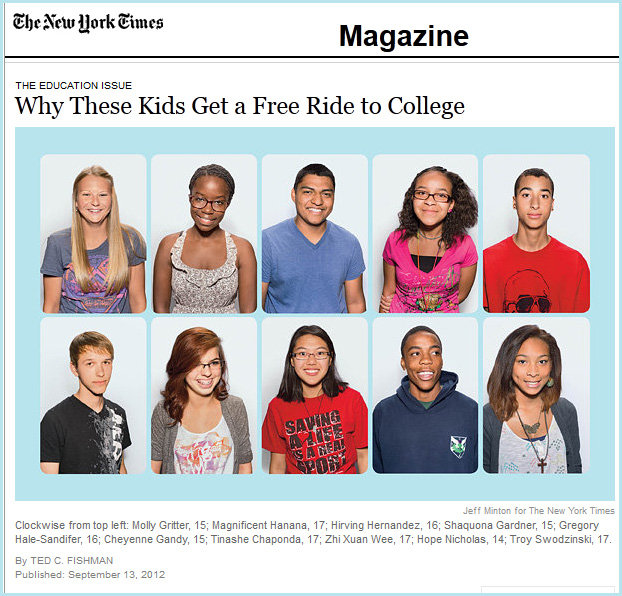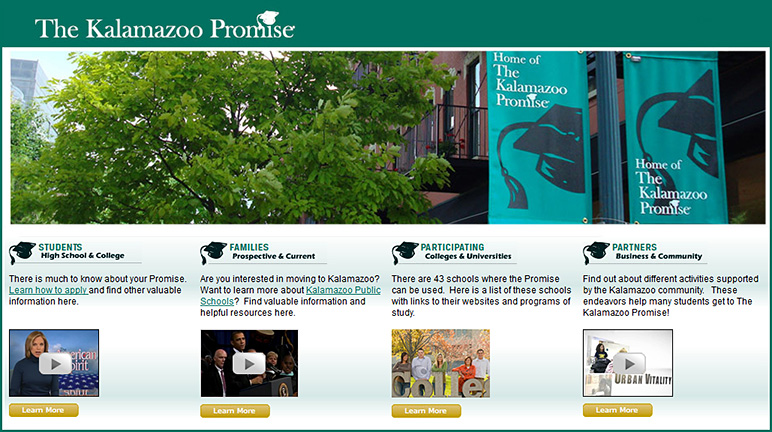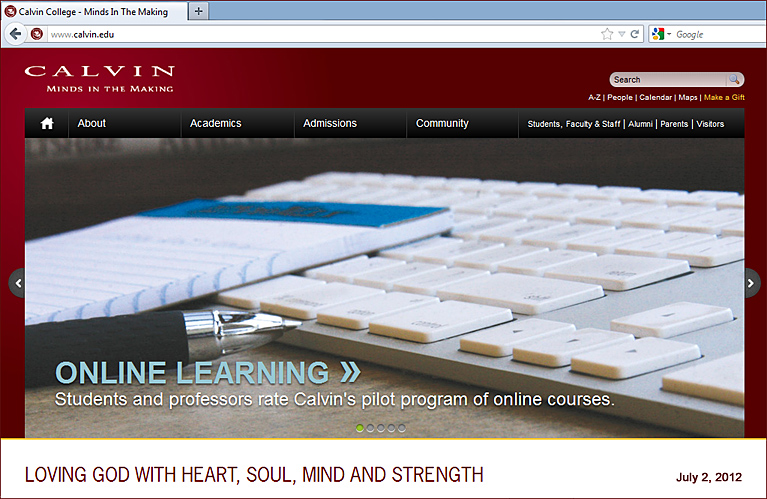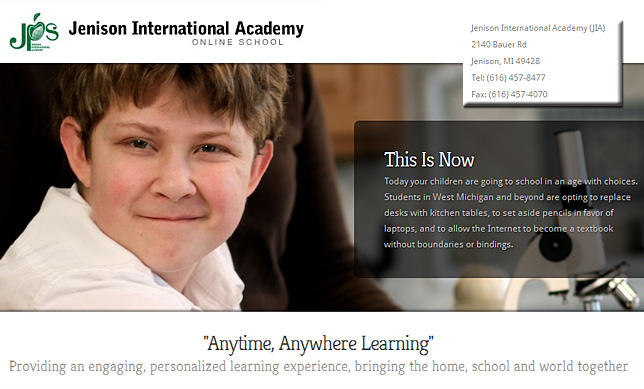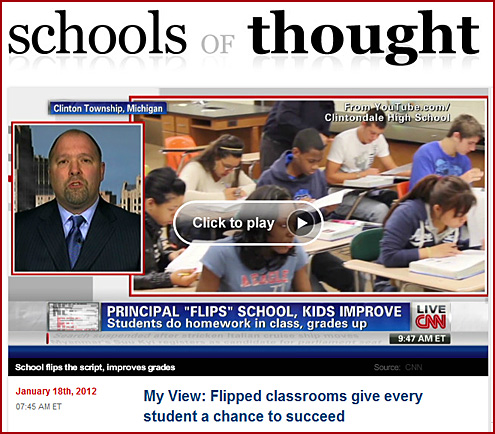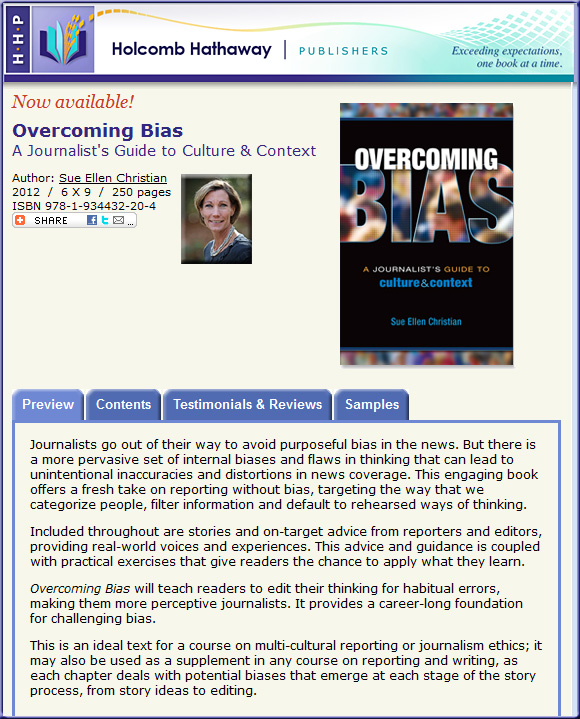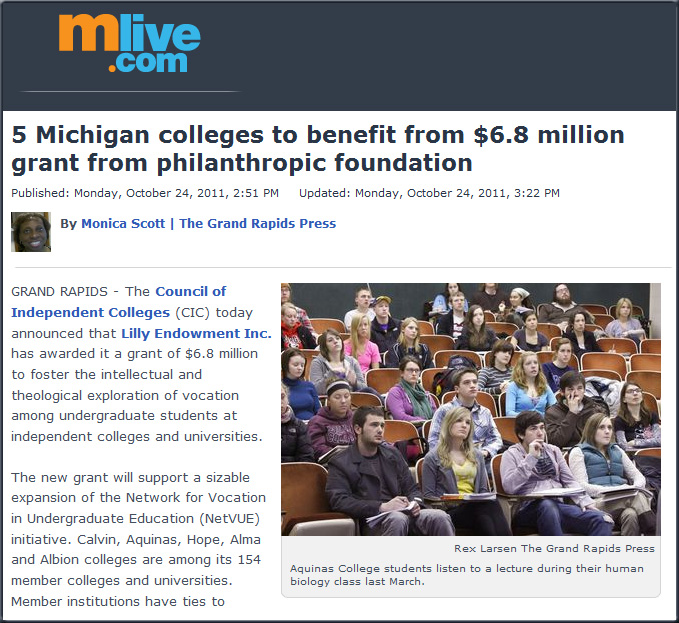
(Ok, a little early, but now that Michigan has experienced some warmer weather, I’m game!)
Steelcase Education Solutions showcased its
collaborative learning furniture at CEFPI in San Antonio.
.
Steelcase Education Solutions’ furniture
focuses on the concept of active learning.
.
Excerpt:
GRAND RAPIDS, Mich. — The future of classroom furniture can now be found in more compact and flexible designs. Education Solutions, a division of Steelcase Inc., has redefined its approach to classroom furniture by incorporating designs that accommodate the needs of students, teachers and the educational approach of the future.
From DSC:
Being involved with planning our Next Generation Smart Classroom, what I especially appreciate about what Steelcase has done here is to allow for more flexible seating solutions. Faculty can have students quickly and efficiently re-arrange their seating configurations in order to enable greater collaboration. There are several other advantages/features in their offerings, but I wanted to highlight that one.
Created by Knewton and Column Five Media
.
Also see:
- MSU-developed video game aims to increase financial literacy — from news.MSU.edu
Excerpt:
EAST LANSING, Mich. — A new video game designed to teach young people the ins and outs of finances has been developed by the Michigan State University Games for Entertainment and Learning Lab.Collaborating with the MSU Federal Credit Union, the game, titled “Spartan Villa,” addresses common financial challenges, such as implementing a monthly budget and learning how credit works, by creating a realistic financial system embedded in a fun, low-pressure game world.The game introduces players to critical financial concepts through the virtual management of college rental houses, making players responsible for expanding and maintaining their houses by effectively utilizing their finances.
Paying bills on time, allocating funds to the proper accounts and monitoring monthly spending ultimately allows players to purchase rooms to expand their houses, host social events to attract future tenants, and increase their overall credit scores.
10 best colleges for game-based learning — from bestcollegesonline.com
.
Excerpt:
If you were busy playing Call of Duty and you missed it, July 8 was Video Games Day. While most people’s experience with gaming involves mindless destruction or sports competition, educators have begun to see the value in the medium for helping students learn. While the research is still developing and some professors are still skeptical, these 10 colleges represent your best bets for learning while playing video and other games.
From DSC:
I’m a member of the team working at Calvin College to get online learning implemented for the College. I’m grateful for — and proud of — our team and what we’ve been able to accomplish thus far. (BTW, I use the word pride knowingly but carefully.) My hope/dream/vision is that people from all over the world will be able to get a solid, Christian-based education at a significantly-reduced price!
From DSC:
I’d like to send a shout out to my sister, Sue Ellen Christian (Isacksen), who has been working hard on publishing her new book, Overcoming Bias. Sue Ellen teaches in the Communications Department for Western Michigan University. Congrats sister! I’ll be ordering my copy later today!
.
West Michigan colleges among top institutions nationally with most students studying abroad — from The Grand Rapids Press by Monica Scott
Michigan universities, state lawmakers look for ways to bring down price of higher education [Knake]
Michigan universities, state lawmakers look for ways to bring down price of higher education — from mlive.com by Lindsay Knake | The Saginaw News
Also:
- Poll: Young Adults Say Higher Education is More Important but Less Affordable— from The Institute for College Access & Success; Comes with too Much Debt, and Should be a Priority for Congress and the Economy
- Free College: How to Audit Courses From 7 Elite Schools Online — from mashable.com by Danny Gallagher
Excerpt:
“We have discovered that structured programs that encourage and guide students in the theological exploration of vocation do indeed help them draw on the wisdom of their religious traditions as they make decisions about their futures and figure out how to lead lives that really matter,” said Craig Dykstra, the Lilly Endowment’s senior vice president for religion.
Unlikely state is tops in tech job hiring — from TechNewsDaily by Samantha Murphy

Excerpt:
A report by the TechAmerica Foundation revealed that Michigan added the most technology jobs last year, bringing in 2,700 high-tech jobs between 2009 and 2010, a nearly 2 percent increase from the year before. Michigan now boasts 155,100 technology employees.












